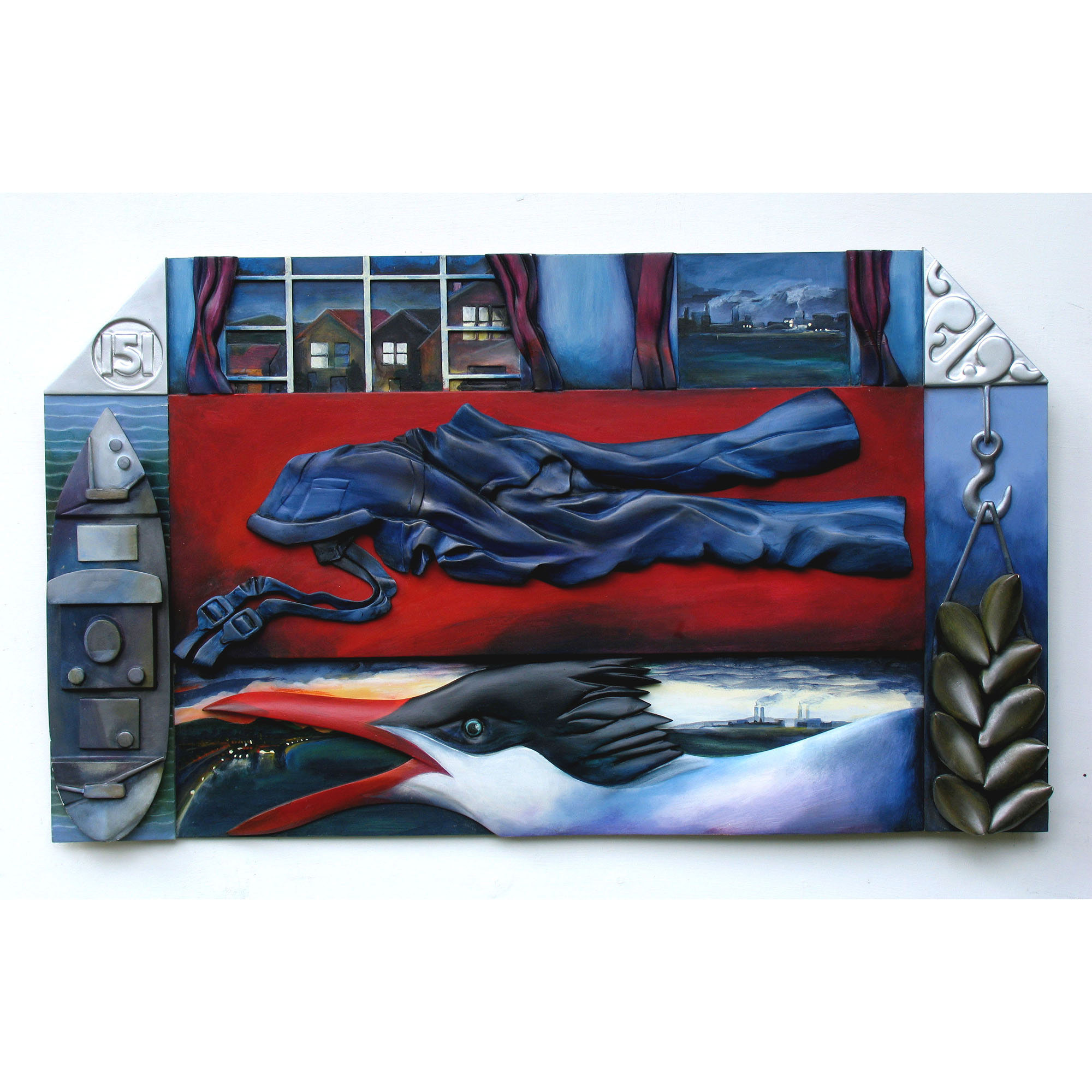About the Strike 51 Series
To give some context to my Strike 51 reliefs let me refer to two essays by John Berger: ‘Appearances’ and ‘Stories’
In ‘Appearances’ he writes about the half-language of how things appear to us.
“Our response to appearances is a very deep one which is instinctive and atavistic. For example, appearances alone – regardless of all conscious considerations – can sexually arouse. For example, the stimulus to action – however tentative it remains – can be provoked by the colour red. More widely, the look of the world is the widest possible confirmation of the thereness of the world, and thus the look of the world continually proposes and confirms our relation to that thereness, which nourishes our sense of Being.”
I intend that the Stike 51 Series should provoke this conscious sense of appearance. I want the viewer, in the first instance, to just look at them, to look into them and, for a moment, to simply be with them. Only then can questions of what they depict or what they mean grow naturally out of this initial experience.
 Nightwear. From Strike 51 series
Nightwear. From Strike 51 series
I also see these sculptures as storytelling works. Like Berger, I don’t see story as reportage. The story’s essential tension is in the mystery of the spaces between the images as it moves towards its destination. Berger writes, “No story is like a wheeled vehicle whose contact with the road is continuous. Stories walk, like animals or people.” He goes on to say that stories are not only discontinuous but also based on a tacit agreement about what is not said, and about what connects the discontinuities. In the story of an artwork, the artist and viewer are only part of this agreement. The central role is played by those who the story is about. It is between their actions and attributes and the reactions of the artist and viewer that the unstated connections are made. In this way, the artist, viewer and subject are fused into an amalgam which Berger calls the story’s reflecting subject. The story narrates on behalf of this subject, appeals to it and speaks in its voice.
The events of 1951 make up a complex story, and our perception of it provides a further, even more complex narration, full of spaces and discontinuities. For example, I recently met a woman who had just discovered a suitcase of her dead father’s. It contained his union card and his loyalty card. It also contained several unpublished manuscripts: plays and poems he had written. He had participated in the watersiders’ 151 day lockout of 1951. It was a defining year for this man and his children. After that event, she reported, he had lost revolutionary hope and become resigned to the consumer society of the fifties. Historical interpretations of the events of 1951 vary. Did the cold war stimulate it, was it a last imperial tug from ‘Mother England’, was it a local battle between three leaders: Prime Minister Holland, FOL leader Walsh and Watersider’s leader Jock Barnes.
And behind Jock Barnes there were 20,000 workers and their families. But for many who stood firm, their stories, hopes and ambitions were self-censored, or forgotten in the conformist and comfortable decades that followed. I tell the story of the lockout through these spaces, these discontinuities, connected by the watersiders and their supporters’ actions and attributes (and their offspring) and my reactions to them. As these works begin to be shown, you the viewer can complete the paradigm, so that Berger’s reflecting subject can exist.
Phill Rooke reflects on his own practice. Project Profile: Midst Pikekawa and Rangitoto.